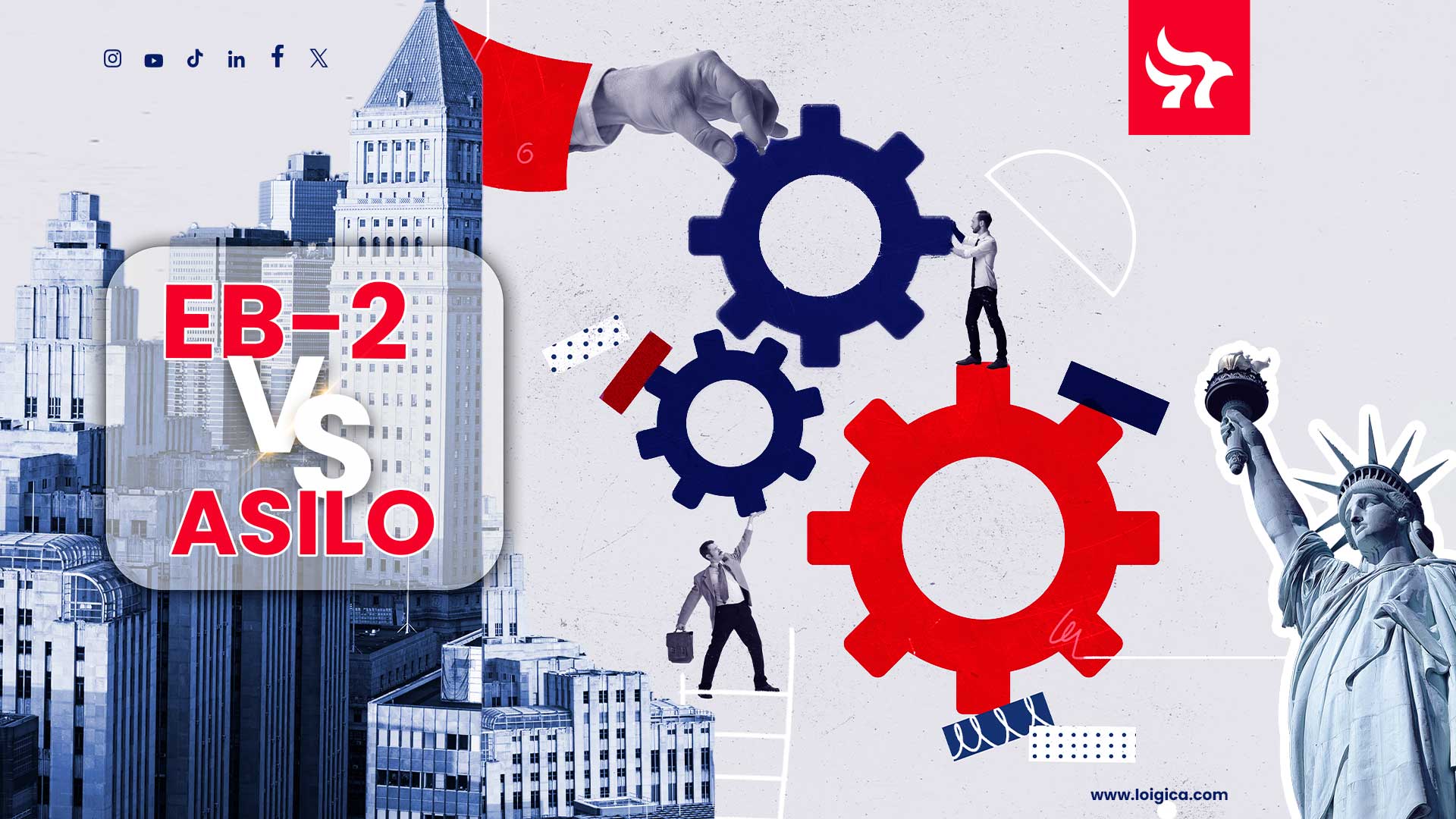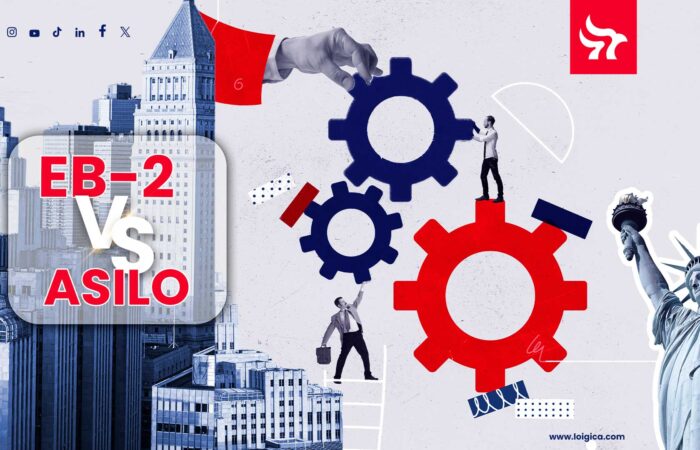Today, being an increasingly globalized world, immigration plays a huge role in the lives of many individuals across the globe. For career opportunities, safety, or a better quality of life, thousands of people a year move to a different country.
Two common immigration pathways in the United States are the EB-2 National Interest Waiver (NIW) and asylum. While both routes have their own distinct features and purposes, they serve different objectives and are tailored to very different circumstances. Here at LOIGICA, we have the recurring question about what’s the best, the easiest and the most accesible way to come to the United States.
In this blog, we’ll discuss the importance of understanding the differences between these two processes.
What's the EB-2 NIW?
The Employment-Based second preference National Interest Waiver (EB-2 NIW) is under the immigrant visa category which allows foreign nationals with exceptional abilities to work, reside, and develop their proposed endeavor in the United States. This visa comes with the opportunity to obtain permanent residency. It is designed for individuals who can demonstrate their specialized work is considered of benefit and national interest to the U.S.
EB-2 NIW candidates must meet specific criteria when applying for this visa, such as an advanced degree, unique awards, published research, and show their work has a great impact on their specific area of expertise. This is a very popular visa for individuals who have a high demand career in the US, which essentially allows a labor certification to be waived. Here are some key points about the EB-2 NIW:
- Qualifications. Applicants should have an advanced degree or exhibit exceptional abilities in their industry. These industries may include but are not limited to sciences, arts, business, or technology.
- Self-petition. NIW allows individuals to self-petition. Applicants must prove that their work benefits and is of national interest in the United States, either economically or culturally.
- Labor Certification Waiver. One of the significant advantages of the NIW is the waiver of the labor certification process, which simplifies and accelerates the application process.
- Priority Dates. Priority dates determine when applicants can file their adjustment of status applications. However, it is important to note, the availability of visas can vary, impacting the time it takes to receive your permanent resident status.
What's Asylum?
Asylum is considered to be a process that can be very complicated. This is a humanitarian immigration option for individuals who fear persecution in their country of origin. This fear may be based on their race, religion, nationality, political opinion, or membership in a particular social group. Let’s take a closer look at asylum:
- Eligibility. To be eligible for asylum, applicants must prove a well-founded fear of persecution in their home country. This persecution can be on the grounds of race, religion, nationality, political opinion, or membership in a particular social group.
- Affirmative vs. Defensive Asylum. Asylum seekers can apply affirmatively by submitting their application to U.S. Citizenship and Immigration Services (USCIS). Alternatively, they can seek asylum defensively if apprehended by immigration authorities.
- Work Authorization. Asylum applicants may apply for work authorization while their cases are pending, which allows them to work legally within the US.
- Refugee vs. Asylee Status. If granted asylum, individuals become asylees. If they are outside the United States and granted protection, they are considered refugees.
Key Differences between the EB-2 NIW and the Asylum
EB-2 NIW and asylum serve distinct purposes within the U.S. immigration system. Here are the key differences between the two:
- Purpose. The EB-2 NIW is essentially for individuals with exceptional abilities or advanced degrees who can contribute significantly to the national interest and development of the United States. In contrast, asylum is designed to protect individuals who fear persecution in their country of origin.
- Eligibility. EB-2 NIW applicants must meet specific educational and professional criteria, while asylum eligibility is based on persecution.
- Application Process. The NIW allows for self-petitioning and a waiver of the labor certification process, making processes more direct for many individuals. Asylum requires a comprehensive application and often involves interviews and multiple court proceedings.
- Timing. The EB-2 NIW process may vary due to visa availability, while asylum cases are widely in processing times based on each case but often have shorter waiting periods.
- Outcome. Candidates with successful EB-2 NIW applications receive permanent residence in the United States. Asylum recipients, on the other hand, are granted protection but do not automatically receive a permanent resident status.
Choosing between applying to the EB-2 NIW and seeking Asylum depends on an individual’s unique circumstances. Both pathways offer many opportunities for those seeking a new life within the United States. While the EB-2 NIW is suitable for professional individuals with exceptional abilities contributing to the country’s national interest, an Asylum provides a path for those fleeing persecution in their home country.
Understanding the differences between these two immigration options is crucial for making an informed decision, it is important to work with a skilled team of immigration attorneys such as those here at LOIGICA to guide you to success.
Recomendados

Gold Card for high net worth Latin Americans: decisions beyond the first million dollars




